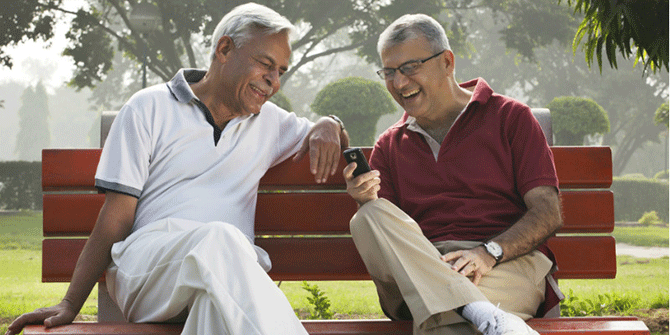
When people talk about health and fitness, they either take them as the same, or not. In either case, they are both right – and wrong.
Health and fitness are closely related with each other but are not the same.
Here’s why…
What is Health
Before:
The World Health Organization (WHO) defined health as a “state of complete physical, mental and social well-being, and not merely the absence of disease or infirmity. It includes aging well, longevity, quality of life, freedom from pain, etc.”
Now:
That was in the 1940’s. Things have evolved since then. Now, Stedman’s Medical Dictionary defines health as the “capacity to function and cope with life at an optimal level, whether physically, psychologically and socially.”
The current definition includes these factors to determine your state of health, i.e., heredity, gender, education, job and income.
What is Fitness
Before:
At the same time WHO defined health, it also defined fitness as “a set of attributes that people achieve that relates to the ability to perform physical activity.”
To be considered fit, you must satisfy several factors such as endurance, stamina, strength, flexibility, balance, etc.
Now:
The American College of Sports Medicine defines fitness, or “physical fitness” – to be more precise – is the capacity and capability of the body to perform, based on factors such as cardiovascular condition, muscular strength, stamina and body composition.
And these factors must all be present for you to be considered fit.
The illustration below will give you a better understand of the relationship between health and fitness.

Fitness and Health Relationship
With their relationship safely tucked under your belt, you may ask…
Can one be healthy, yet not fit and vice-versa?
Based on the updated definitions of health and fitness, it is possible that one can be healthy, but not fit, and fit but not healthy?
Let me explain…
You are healthy if your metabolic indicators like blood pressure, cholesterol levels (HDL and LDL), blood sugar, etc., are normal or within tolerable limits.
But you are not fit if you don’t exercise regularly. You are not fit if you have physical limitations and disabilities that stop you from undertaking fitness endeavors.
On the flip side, you can be fit but not healthy if you have serious family, social and financial problems that affect your capacity to perform or function normally.
No amount of exercise can make you healthy if you don’t eat well, take drugs or having an unhealthy lifestyle.
Health and Fitness in Seniors
Due to healthy lifestyles and advances in medicine and personal care, people these days live a longer than a decade or generation ago. For example, 1 in 8 Americans are older than 65 years and can expect to live 18 more years.
The downside is that increased longevity increases the incidence of chronic conditions that can result to functional disability. It can result to a decline in health, reduced mobility, depression, isolation and loneliness.
Other than these age-related issues, the health and fitness of seniors are also affected by other factors like demographic, social and environmental, or their amount of physical activity and nutrition.
Lucky for you and me (and other seniors), there is a plethora of programs and interventions to copy with these health and fitness issues among seniors. And seniors these days are making use of them. In fact, “health issues” are one of the most searched subject by seniors online
Most searches are about physical activity and diet programs, proving how conscious they are of their health and fitness.
And for good reason…
– Physical activities:
Physical activity is important for people of all ages. For the elderly, it is crucial
Exercise slows down age-relate muscle mass deteriorating, thus reducing the risk of injuries to falls. It is essential for balance, strength, and mobility. And it is a good mood-enhancer.
Aside from its physical benefits, exercise also slows down cognitive function decline resulting to better memory and reasoning. It promotes faster healing of injuries, prevents diseases and other chronic conditions, improve quality of life and expectancy.
To be effective, your exercise program must cover the following:
- heart health
- Strength
- Balance
- Flexibility
– Diet:
Exercise, alone, won’t help you achieve your health and fitness goals without a proper diet.
However, most people cringe at the mere mention of the word “diet.” They take dieting as fasting or abstinence. That isn’t so.
Dieting is simply eating the right kinds of foods at the right time, and quantity. Dietitians call it healthy eating. And for seniors, healthy eating means:
- Lots of fruits and vegetables, either fresh, frozen or canned. Load your diet with dark green vegetables like broccoli, and orange vegetables like carrots and sweet potatoes;
- Proteins from fish, beans and fish;
- At least three ounces of whole-grain cereals, breads, crackers, rice or pasta per day;
- Three servings of low-fat or fat-free dairy products fortified with vitamin D like like milk, yogurt or cheese. These are good for bone health;
- Using healthy, i.e., polyunsaturated or monounsaturated fats.
Health and fitness is prescribed for people of all ages. It is crucial among seniors to offset the effects of aging such as changes in metabolism, mobility problems, loss of appetite, deterioration of the immune system, unwanted fats, chronic diseases, sleep problems and many others.
While these may be unavoidable but, but their debilitating effects can be minimized by maintaining a healthy lifestyle, proper nutrition and regular exercise.
In old age, one should be as concerned in adding life to your years and adding years to your life.
Sharing is one of the nobler things in life. So please share with other seniors
~oOo~